Take the time to honor and support your friends and colleagues. Be sure to add the division award winners’ talks to your calendar; they are scheduled in various symposia throughout the week.
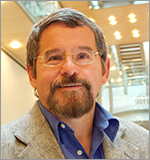 Sensor Division Outstanding Achievement Award
Sensor Division Outstanding Achievement Award
Monday, October 1 | 0800-0840h
Universal 17 (Expo)
Electrochemical Sensors: From Beakers to the Skin and the Mouth
By Joseph Wang
Joseph Wang is Distinguished Professor, SAIC Endowed Chair and Chair in the Department of Nanoengineering at University of California, San Diego. He is also the director of the UCSD Center of Wearable Sensors.
He received his PhD from the Technion in Israel. He was a member of the Chemistry department at NMSU where he held a Regents Professor and a Manasse, and served as the director of Center for Bioelectronics and Biosensors of Arizona State University before joining UCSD in 2008. Wang has published more than 1,050 papers, 11 books and he holds 25 patents (H Index=151, >95,000 citations).
He received two American Chemical Society National Awards, one in 1999 (Instrumentation) and the other in 2006 (Electrochemistry) and Honorary Professors from Spain, Argentina, Czech Republic, Romania, China, Slovakia, and Slovenia. Wang has been the founder and editor-in-chief of Electroanalysis (Wiley) for 30 years.
His scientific interests are concentrated in the areas of biosensors, bioelectronics, wearable sensors, bionanotechnology, nanomachines, and electroanalytical chemistry.
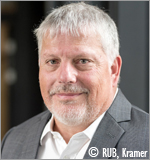 Europe Section Allessandro Volta Medal
Europe Section Allessandro Volta Medal
Monday, October 1 | 1510-1550h
Universal 18 (Expo)
From Nanobiosensors to Scanning Bipolar Electrochemistry
By Wolfgang Schuhmann
Wolfgang Schuhmann is from the Center for Electrochemical Sciences. He obtained his degree in chemistry from the University in Karlsruhe, Germany and his PhD from the Technical University of Munich. After finishing his habilitation thesis at the Technical University of Munich, he was appointed professor for analytical chemistry at the Ruhr-Universität Bochum.
His research interest addresses the development of reagentless amperometric biosensors, enzymatic biofuel cells and biocapacitors, micro- and nanoelectrochemistry, scanning electrochemical microscopy, localized corrosion, combinatorial microelectrochemistry, electrocatalysis for energy conversion and storage, new materials for electrocatalysis and photoelectrocatalysis as well as the in-depth understanding of electrified interfaces.
He is coauthor of more than 620 scientific publications. He has received the Biosensors & Bioelectronics Award (2000), became a Fellow of the Royal Society of Chemistry (2008), received the Julius-von-Haast Fellowship Award of the Royal Society of New Zealand and the Humboldt Foundation Germany (2008), the Katsumi-Niki-Award of the International Society of Electrochemistry (2011), was appointed to be Fellow of the International Society of Electrochemistry (2012), received the Howard Fellowship of the University of New South Wales, Sydney (2014), was appointed to be a Distinguished Visiting Professor, University Iuliu Hatieganu, Cluj-Napoca, Romania, and was awarded the Schulich Visiting Professor Lectureship for 2018-19 of the Technion – Israel Institute of Technology; Haifa.
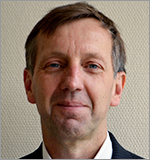 Luminescence and Display Materials Division Centennial Outstanding Achievement Award
Luminescence and Display Materials Division Centennial Outstanding Achievement Award
Tuesday, October 2 | 1000-1040h
Universal 11 (Expo)
Vacuum Referred Electron Binding Energies in Impurity and Host Band States as Revealed from Empirical Studies; a Personal Account
By Pieter Dorenbos
Pieter Dorenbos received his physics education and did his PhD research at the University of Groningen, where he was appointed in July 1988 as assistant professor at the Technical University of Delft, The Netherlands.
He remained employed at TUD, where he is now heading, as full professor, the section Luminescence Materials in the Faculty of Applied Sciences. He started with projects on the development of new lanthanide activated scintillation crystals for detection of ionizing radiation. This ongoing research has resulted in various new patented scintillators that led to successful commercial products. Notably, LaBr3:Ce3+;Sr2+ is the best scintillator available to detect the energy of gamma photons.
Dorenbos’ interest broadened to all types of lanthanide activated luminescence inorganic compounds, and he became particularly interested in where lanthanide energy levels are located within the bandgap, and how that affects luminescence properties. This work resulted in various empirical models to construct diagrams showing all lanthanide levels within the band gap.
In 2012, he presented the chemical shift model that enables to relate energy levels of host bands and lanthanide impurity states in different compounds to a common energy reference, i.e., the vacuum level. It is a unique approach that is being adopted in the field.
He is currently interested in the energy level locations of transition metal elements and 6s2-elements like Bi3+. His mission is to develop new luminescence materials by rational design instead of serendipity.
He (co)authored >400 papers that appeared in peer reviewed scientific journals and that are cited about 17,000 times.
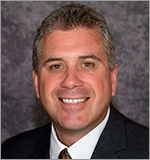 Corrosion Division H.H. Uhlig Award
Corrosion Division H.H. Uhlig Award
Tuesday, October 2 | 1400-1430
Universal 1 (Expo)
Non-Faradaic Release of Copper during Corrosion of Engineering Alloys
By Rudolph Buchheit
Rudolph G. Buchheit is professor of chemical and materials engineering and dean of the College of Engineering at the University of Kentucky.
Prior to his appointment at Kentucky, he was professor and chair in the Department of Materials Science and Engineering, and later, associate dean in the College of Engineering at Ohio State. Before that he was a senior member of the technical staff at Sandia National Laboratories.
Buchheit earned a BS at Loyola University Maryland, and MS and PhD in materials science from the University of Virginia.
His research focuses on corrosion science and engineering with emphasis on corrosion, corrosion protection, and corrosion prediction of light metals. He has published over 270 technical articles on these subjects with students and colleagues, and holds 18 patents and patent disclosures related to surface treatments and coatings.
He has contributed seven chapters to books, edited three technical proceedings and co-authored two books. He is a Fellow of The Electrochemical Society, and NACE International and has served in committee and division leadership positions within each organization. He is also a past chair of the University Materials Council. He is the recipient of the H.H. Uhlig Educator’s Award from NACE, and the Morris Cohen Graduate Student Award from the Corrosion Division of The Electrochemical Society. He is also the recipient of the Stanley E. Harrison Faculty Award from the College of Engineering at Ohio State, and is a two-time recipient of the college’s Charles Ellison MacQuigg Award for outstanding teaching.
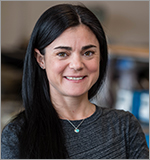 Corrosion Division Morris Cohen Graduate Student Award
Corrosion Division Morris Cohen Graduate Student Award
Tuesday, October 2 | 1430-1500h
Universal 1 (Expo)
Local Hydrogen Detection Techniques for Atmospheric Uptake in Ultra-High Strength Steels
By Rebecca Schaller
Rebecca Schaller is currently an assistant professor in the Department of Materials Engineering at the University of British Columbia in Vancouver, Canada.
She earned a BS degree in Spanish in 2005 from the University of Oregon and an MS degree in Physics from Portland State University in 2010. Rebecca received her PhD in Materials Science and Engineering from the University of Virginia in 2016 under the direction of John R. Scully. Her work focused on developing techniques to probe local scale hydrogen concentrations and interactions in ultra-high strength steels, specifically those produced under atmospheric exposure.
During her graduate studies Rebecca received an Endeavour Research Fellowship, which was carried out in collaboration with Monash University and the Commonwealth Scientific and Industrial Research Organization in Clayton, Australia.
Since her time at UVA, Rebecca has worked as a postdoctoral assistant at Sandia National Laboratories in the Materials Aging and Reliability group, where her research focused on the local chemical and morphological effects of atmospheric corrosion of aluminum and corrosion of additively manufactured materials. She has recently begun her position as assistant professor at UBC where her current work will incorporate an emphasis on understanding corrosion at the local, microstructural level to better predict overall corrosion properties and rates.
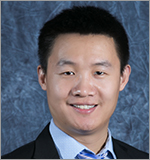 Battery Division Student Research Award sponsored by Mercedes-Benz Research & Development
Battery Division Student Research Award sponsored by Mercedes-Benz Research & Development
Tuesday, October 2 | 1600-1640h
Galactic 1, (Sunrise)
Revisiting the Electrochemical Stability Window of Solid Electrolytes
By Fudong Han
Fudong Han began his academic career at Shandong University in China, where he obtained his BS degree (2009) and MS degree (2012) in Materials Science and Engineering. During this time, he had been working on synthesizing and characterizing carbon-based anodes for lithium-ion batteries.
Han started his PhD in 2012 under the supervision of Chunsheng Wang at the Department of Chemical and Biomolecular Engineering at University of Maryland College Park. His PhD work focuses on the development of safe, high-performance all-solid-state batteries through understanding and addressing the key challenges in electrodes, solid electrolyte and their interfaces.
As one of Han’s main findings, he shows the electrochemical stability windows of solid electrolytes are overestimated from the conventional measurement, and the decompositions of solid electrolytes occur and need to be seriously considered when developing high-performance all-solid-state batteries.
Han has published 49 peer-reviewed papers and co-authored two U.S. patents. Han is a recipient of Materials Research Society Graduate Student Gold Award.
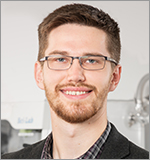 Battery Division Student Research Award sponsored by Mercedes-Benz Research & Development
Battery Division Student Research Award sponsored by Mercedes-Benz Research & Development
Tuesday, October 2 | 1640-1720h
Galactic 1, (Sunrise)
Advanced Electrochemical Energy Storage Systems: Material Development, Alternative Electrode Processes & Planar Devices
By Steven Lacey
Steven David Lacey’s passion for electrochemistry and engineering culminated at a young age, when he realized the need for a more fuel-efficient means of transportation while restoring classic cars with his father.
As an undergraduate at the University of Maryland, he began collaborative energy storage research with Kang Xu and Arthur v. Cresce at the U.S. Army Research Laboratory, where he developed a planar device platform to study alkali-metal-ion battery operation at the nanoscale. Over several DoD internships, his research efforts began to expand into additional topics including optoelectronics, plasmonics, and material development for defense-related interests (body armor, smoke obscurants). After obtaining his BS in Materials Science and Engineering, he started his PhD at his alma mater under the continued supervision of Liangbing Hu.
Lacey is a recipient of the 2015 National Defense Science and Engineering Graduate Fellowship and President (2017-2018) of the ECS Student Chapter at UMD. He has published 30 peer-reviewed papers.
His PhD thesis research is devoted to nanomaterial synthesis, understanding battery fundamentals, and the development of alternative electrode manufacturing processes for advanced electrochemical energy storage systems. His current research focuses on the development of novel multimetallic electrocatalysts for metal-air batteries using a synthesis method described in his recently published work in Science.
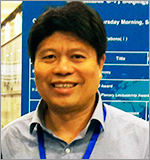 Battery Division Technology Award
Battery Division Technology Award
Wednesday, October 3 | 1320-1400h
Galactic 1, (Sunrise)
Insight of Structures and Properties of Cathode Materials for Li-ion Battery
By Feng Pan
Feng Pan, with more than a decade of experience in large international corporations, has been engaged in fundamental research and product development of novel optoelectronic and energy storage materials and devices.
As chief scientist, Pan led eight entities in Shenzhen to win the $150 million RMB grant for the national EV-battery innovation project in 2013-16. Pan also led 12 entities to win the National Key project of Material Genomic Engineering for Solid State Li-Ion Battery in China in 2016.
He has led his group to achieve outstanding research vs. MGI on electrochemistry, battery, and materials by a combination of comprehensive experimental tests and theoretical calculations, e.g. developing novel cathode materials and methods to study related electrochemical mechanism, and exploring new generation of solid state batteries.
Pan has published more than 250 peer-reviewed papers in international journals and book chapters and 80 patents for inventions. He has been selected as one of the 2016 winners of the Outstanding Research Award of Advanced Lithium Batteries for Automobile Applications. He is the Founding Dean of School of Advanced Materials at the Peking University Shenzhen Graduate School and Director of National Center of Electric Vehicle Power Battery and Materials for International Research.
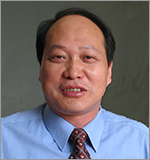 Battery Division Technology Award
Battery Division Technology Award
Wednesday, October 3 | 1400-1440h
Galactic 1, (Sunrise)
Aqueous Li(Na) –ion Batteries as Potential Stationary Power
By Yongyao Xia
Yongyao Xia is a professor in the Department of Chemistry and Institute of New Energy of Fudan University, China. His research interests involve advanced materials and technologies for energy storage and conversion devices, e.g., lithium-ion batteries, electrochemical supercapacitors, lithium-air, lithium-sulfur batteries, etc. He has worked in these areas for nearly 28 years.
Throughout his career, he has published more than 280 papers in peer-reviewed scientific journals, contributed to three book chapters, and holds 40 Japanese and Chinese patents on energy conversion and storage devices. His research work has been highly cited over 16,000 times.
He received the Outstanding Young Scientist Award of the Natural Science Foundation of China in 2009, Contribution Award in Electrochemistry of the Chinese Society of Electrochemistry in 2015, and the first prize of Natural Science Award of Ministry of Education in 2015.
He serves as the president of the Chinese Society of Electrochemistry, the China representive of the International Society of Electrochemistry, and the chair of The Electrochemical Society China Section. He is also the editor of Journal of Power Sources.
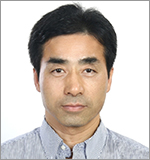 High-Temperature Energy, Materials, & Processes Division Outstanding Achievement Award
High-Temperature Energy, Materials, & Processes Division Outstanding Achievement Award
Wednesday, October 3 | 1400-1440h
Universal 22 (Expo)
Recent Advances in Intermediate-Temperature Fuel Cells: Surface Modification and In Situ/Operando Characterization
By Meilin Liu
Meilin Liu is the B. Mifflin Hood Chair, Regents’ Professor, and Associate Chair of the School of Materials Science and Engineering at Georgia Institute of Technology.
He received his BS from South China University of Technology and his MS and PhD from University of California at Berkeley, all in MSE. His research interests include point defects and transport in solids, electrochemical behavior of thin films and interfaces, solid state ionics, and electroceramics.
His current research activities include in situ/operando characterization and multi-scale modeling of charge and mass transfer along surfaces, across interfaces, and in membranes, thin films, and nanostructured electrodes, aiming at achieving rational design of materials and structures with unique functionalities for efficient energy storage and conversion.
He has supervised 32 postdoctoral fellows, 38 PhD students, 25 joint PhD students, 13 MS students, and 28 visiting scholars. He holds 27 U.S. patents, published ~430 refereed journal papers, co-edited 7 proceedings volumes, and co-organized 11 international symposia/workshops.
He is a Fellow of The Electrochemical Society and American Ceramic Society. He was the winner of the Charles Hatchett Award, Kolon Faculty Fellow, Outstanding Faculty Research Author Award and Outstanding Achievement in Research Program Development Award from Georgia Tech, Ross Coffin Purdy Award, NASA Tech Brief Award, Crystal Flame Innovation Award in Research, Sustained Research Award and Best Faculty Paper Award from Sigma Xi, among others.
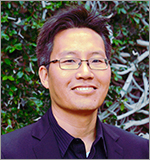 Electrodeposition Division Research Award
Electrodeposition Division Research Award
Wednesday, October 3 | 1400-1445h
Universal 8 (Expo)
Old Stagnant Technology Becoming Hot Technology:Electroplating Advanced Functional Materials
By Nosang Myung
Nosang Vincent Myung received his BS, MS, and PhD degree in chemical engineering from the University of California, Los Angeles in 1994, 1997, and 1998, respectively. He spent three years as a research engineer at the same institution.
From 2001-2003, he was an engineer in the micro electromechanical systems group at NASA’s Jet Propulsion Laboratory. In 2003, he joined the Department of Chemical and Environmental Engineering at University of California-Riverside. He served as the Department Chair from 2011-2016.
Currently, he is serving as the founding director for UC-KIMS Center for Innovative Materials for Energy and Environment and co-director for Winston Chung Global Energy Center.
During his career he has received the KIChE President Award, Brainpool Fellow from Korean Government, University of California Regent Fellowship, Jet Propulsion Laboratory Spot Award, and the Abner Brenner gold medal award from American Electroplaters and Surface Finishers Society.
Myung’s research interests are focused on the synthesis of nanoengineered materials and applying these materials in various advanced applications including spintronics, sensors, electronics, optoelectronics, energy harvesting, and environmental remediation. Myung’s group objective is to control nanoscale sized features to enhance material properties and device functions beyond those that we currently know.
He has published over 200 peer-reviewed journal papers and his h-index is 54 with the total citation of over 10,000.
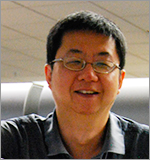 Battery Division Research Award
Battery Division Research Award
Wednesday, October 3 | 1440-1520h
Galactic 1, (Sunrise)
Forming Interphases
By Kang Xu
Kang Xu has been doing research on electrolyte materials for 30 years. His interests encompass materials synthesis and interphasial mechanisms in electrochemical energy storage devices. He has been recognized 20 times for numerous awards.
In the electrochemical community he is mainly credited for contributions to new electrolyte materials and fundamental understanding of interphasial chemistries. His work on high voltage aqueous electrolytes was considered disruptive, which opens new horizons to next generation of aqueous batteries and brings many unprecedented features including safety, tolerance against abuse, and form-factor flexibility.
He has published 180+ papers, four chapters/books, and currently holds 20+ patents. Among those he is best known in the field for the two comprehensive reviews written for Chem. Rev. (2004 and 2014), which have been extensively regarded as desk-references by the community. He is co-founder of Center of Research on Extreme Batteries, advisory board member of the ACS Applied Materials and Interfaces, and associate editor of Energy & Environmental Materials and Electrochemistry.
Kang Xu has been an ECS member since 1994. He served various duties in the Society and Battery Division, and has been active as session chairs/symposium organizers in Society meetings.
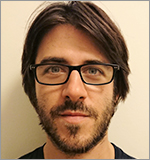 Electrodeposition Division Early Career Investigator Award
Electrodeposition Division Early Career Investigator Award
Wednesday, October 3 | 1445-1530h
Universal 8 (Expo)
Electrochemical Growth Mediated by Nanocluster Aggregation: Implications and Perspectives
By Jon Ustarroz
Jon Ustarroz graduated summa cum laude in materials engineering from the University of Navarra (Spain) and in innovation and technology management from the University of Deusto (Spain).
He obtained his PhD in engineering summa cum laude with congratulations from the jury from the Vrije Universiteit Brussel in 2013, supervised by Herman Terryn and Annick Hubin. While studying the early stages of electrodeposition by using transmission electron microscopy grid electrodes, he developed a novel theory related to electrochemical growth by nanocluster aggregation, which sets the bases for revisiting the Volmer-Weber growth mechanism.
For his postdoctoral research, he worked on the synthesis of nanomaterials by electrochemical routes in non-aqueous solvents and on the electrocatalytic properties of electrodeposited nanostructures. He earned his postdoctoral grant, ranked first, from the Research Foundation – Flanders. In 2016, he conducted research in the group of Patrick R. Unwin at the University of Warwick (U.K.) on the dynamics between single nanoparticles and polarized surfaces by scanning electrochemical cell microscopy.
Ustarroz is author of 30 publications and he is currently supervisor of four PhD students in the Electrochemical and Surface Engineering group of the Vrije Universiteit Brussel. There, he continues his research on non-traditional electrochemical nucleation and growth pathways from aqueous solutions and deep eutectic solvents. He is also involved in developing a multi-scale numerical modelling platform for investigating elementary electrodeposition processes.
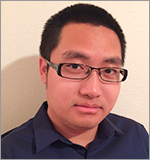 Battery Division Postdoctoral Associate Research Award Sponsored by MTI Corporation and the Jiang Family Foundation
Battery Division Postdoctoral Associate Research Award Sponsored by MTI Corporation and the Jiang Family Foundation
Wednesday, October 3 | 1520-1600h
Galactic 1, (Sunrise)
Stable Li Metal Anode through Designed Solution Chemistry and Electrode Architecture. By Haodong Liu
Haodong Liu received his bachelor’s degree in chemistry from Xiamen University in 2011. During this period, his research focused on fluoride cathode materials for lithium primary battery under the guidance of Yong Yang.
Haodong received his PhD in 2016 from the University of California San Diego under Ying Shirley Meng’s guidance, after which he worked as a postdoc research fellow at UC San Diego with Ping Liu. He is now managing the MTI-UCSD battery fabrication lab, and Arbin-UCSD battery testing lab.
He is the founder of the ECS UCSD Student Chapter, which promotes the interest and advancement of electrochemistry science and technology among both graduate and undergraduate students. His research focuses on novel materials for energy storage and conversion. His recent research topics include the design, synthesis, processing, and operando characterization of advanced electrode materials for Li ion batteries; new intercalation materials for high energy density sodium ion batteries; and novel strategies for high coulombic efficiency dendrite free Li metal anode.
Haodong is the author and co-author of more than 24 peer-reviewed journal articles and three U.S. patents.
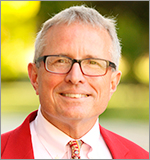 Physical and Analytical Electrochemistry Division Max Bredig Award In Molten Salt and Ionic Liquid Chemistry
Physical and Analytical Electrochemistry Division Max Bredig Award In Molten Salt and Ionic Liquid Chemistry
Wednesday, October 3 | 2010-2040h
Saturn 1/2/3, (Sunrise)
From Liquid Clathrates to Ionic Liquids and Back Again. Was Anything Learned on the Journey? By Robin Rogers
Robin D. Rogers is a research professor at The University of Alabama and president, owner, and founder of 525 Solutions, Inc., in Tuscaloosa, AL.
He obtained both his BS in chemistry and his PhD in chemistry from The University of Alabama. Rogers is the founding editor-in-chief of the American Chemical Society journal Crystal Growth & Design and is an advisory board member to eight other international peer-reviewed journals.
Rogers holds 27 issued patents and has published over 820 papers, with over 40,000 citations, a Hirsch index of 92, and an i10 index of 535.
Rogers was named in the 2014 and 2015 Thomson Reuters Highly Cited Researchers Lists ranking among the top 1% most cited in chemistry. His research interests cover the use of ionic liquids and Green Chemistry for sustainable technology through innovation. Most recently he has embarked on an effort to commercialize the use of biorenewable polymers such as chitin in an effort to eliminate the need for synthetic plastics.
He had an influential role in the expansion of interest and research in ILs, his initial paper on IL/aqueous partitioning (Chem. Comm. 1998, 1765) effectively kick-started interest in applying ILs to clean separations. He was awarded the U.S. Presidential Green Chemistry Challenge Award for work related to the use of ILs in sustainable technology.
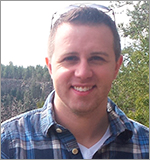 Battery Division Postdoctoral Associate Research Award Sponsored by MTI Corporation and the Jiang Family Foundation
Battery Division Postdoctoral Associate Research Award Sponsored by MTI Corporation and the Jiang Family Foundation
David Bock is currently an assistant scientist in the Energy Sciences Directorate at Brookhaven National Laboratory.
He received his BS in chemistry from the State University of New York at Geneseo in 2008. After graduating, he was employed as an analytical chemist at Inficon Inc., where he worked on development of person-portable gas chromatograph/mass spectrometer systems. He then went to graduate school and received a PhD from Stony Brook University in 2015. His PhD research concentrated on understanding and preventing parasitic cathode dissolution reactions in the battery system used to power implantable cardioverter defibrillators.
After his PhD, he joined Brookhaven National Laboratory as a postdoctoral research associate. While in that position, his research focused on using advanced X-ray characterization techniques, including X-ray absorption spectroscopy and energy dispersive X-ray diffraction, to provide mechanistic insight into Li-ion battery materials. He then joined Brookhaven National Laboratory staff as an assistant scientist.
David’s main research interests are in energy storage applications. He has coauthored over 30 publications in the field. His research emphasizes using state of the art tools, including synchrotron techniques, to probe battery systems. In his spare time, he enjoys outdoor activities and spending time with his wife and daughter.
David would like to thank his PhD and postdoctoral advisors Esther Takeuchi, Kenneth Takeuchi, and Amy Marschilok for their exceptional mentorship and for nominating him for this award.




